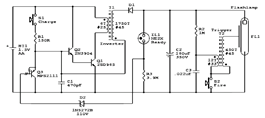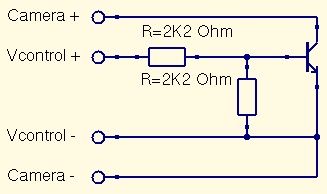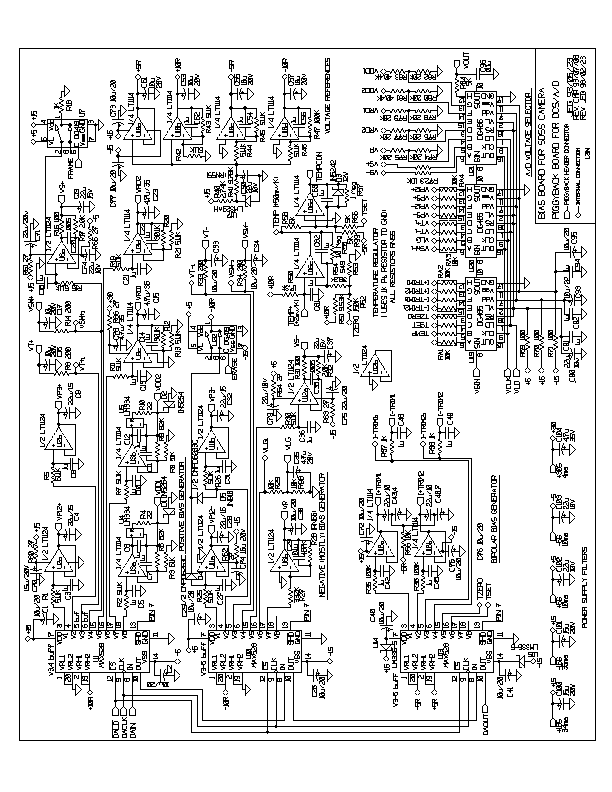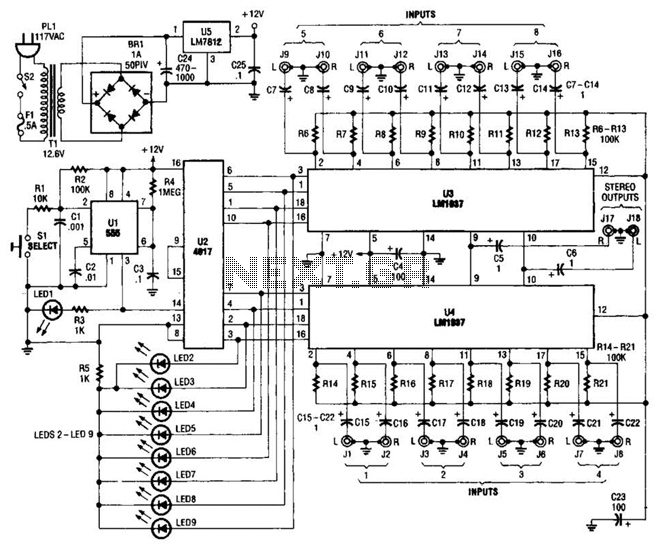
Camera Switcher
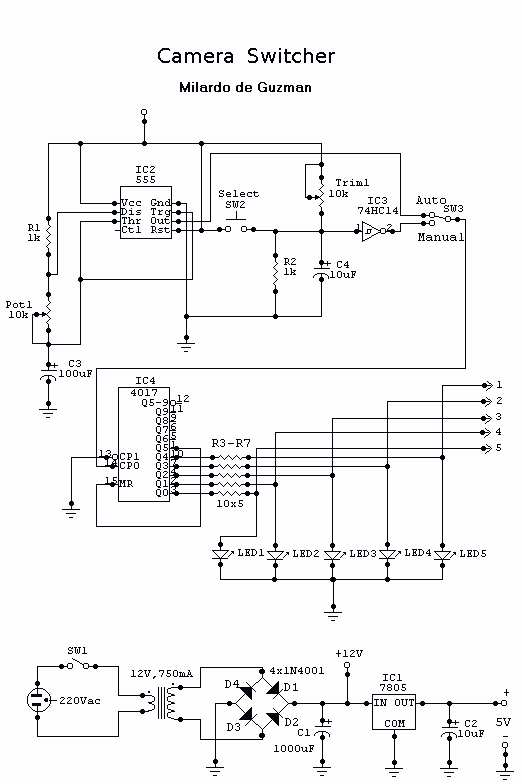
This circuit can be used for multiple cameras with one monitor. The circuit can be operated manually or automatically.
The described circuit functions as a video switching system, enabling the connection of multiple camera inputs to a single monitor output. This configuration is particularly useful in surveillance applications, where multiple camera feeds need to be monitored simultaneously or switched between as required.
The circuit typically includes a selection mechanism, which can be implemented using either mechanical switches for manual operation or electronic components such as relays or transistors for automatic operation. In a manual setup, a rotary switch or push-button switches allow the user to select which camera feed is displayed on the monitor. In an automatic configuration, a microcontroller or timer circuit can be employed to cycle through the camera feeds at predetermined intervals or based on specific triggers, such as motion detection.
Key components of the circuit may include:
- **Cameras**: Each camera should be compatible with the chosen video format (e.g., NTSC, PAL) and have the necessary power supply.
- **Multiplexer or Switch**: A video multiplexer can be used to handle multiple video inputs, allowing for seamless switching between feeds. Alternatively, analog switches or relays can be used for simpler applications.
- **Monitor**: A single video monitor capable of displaying the output from the selected camera. The monitor should support the video format being used.
- **Control Logic**: For automatic operation, a microcontroller (e.g., Arduino, Raspberry Pi) can be programmed to manage the switching logic, controlling the multiplexer or switch based on predefined criteria.
Power supply considerations are crucial, as adequate voltage and current must be supplied to all cameras and active components. Signal integrity should also be maintained, requiring the use of appropriate cabling and connectors to minimize interference and ensure high-quality video transmission.
Overall, the circuit’s design should prioritize user-friendliness and reliability, ensuring that the switching mechanism functions smoothly whether operated manually or automatically.This circuit can be used for multiple cameras with one monitor. The circuit can be operated manually or automatically. 🔗 External reference
The described circuit functions as a video switching system, enabling the connection of multiple camera inputs to a single monitor output. This configuration is particularly useful in surveillance applications, where multiple camera feeds need to be monitored simultaneously or switched between as required.
The circuit typically includes a selection mechanism, which can be implemented using either mechanical switches for manual operation or electronic components such as relays or transistors for automatic operation. In a manual setup, a rotary switch or push-button switches allow the user to select which camera feed is displayed on the monitor. In an automatic configuration, a microcontroller or timer circuit can be employed to cycle through the camera feeds at predetermined intervals or based on specific triggers, such as motion detection.
Key components of the circuit may include:
- **Cameras**: Each camera should be compatible with the chosen video format (e.g., NTSC, PAL) and have the necessary power supply.
- **Multiplexer or Switch**: A video multiplexer can be used to handle multiple video inputs, allowing for seamless switching between feeds. Alternatively, analog switches or relays can be used for simpler applications.
- **Monitor**: A single video monitor capable of displaying the output from the selected camera. The monitor should support the video format being used.
- **Control Logic**: For automatic operation, a microcontroller (e.g., Arduino, Raspberry Pi) can be programmed to manage the switching logic, controlling the multiplexer or switch based on predefined criteria.
Power supply considerations are crucial, as adequate voltage and current must be supplied to all cameras and active components. Signal integrity should also be maintained, requiring the use of appropriate cabling and connectors to minimize interference and ensure high-quality video transmission.
Overall, the circuit’s design should prioritize user-friendliness and reliability, ensuring that the switching mechanism functions smoothly whether operated manually or automatically.This circuit can be used for multiple cameras with one monitor. The circuit can be operated manually or automatically. 🔗 External reference
